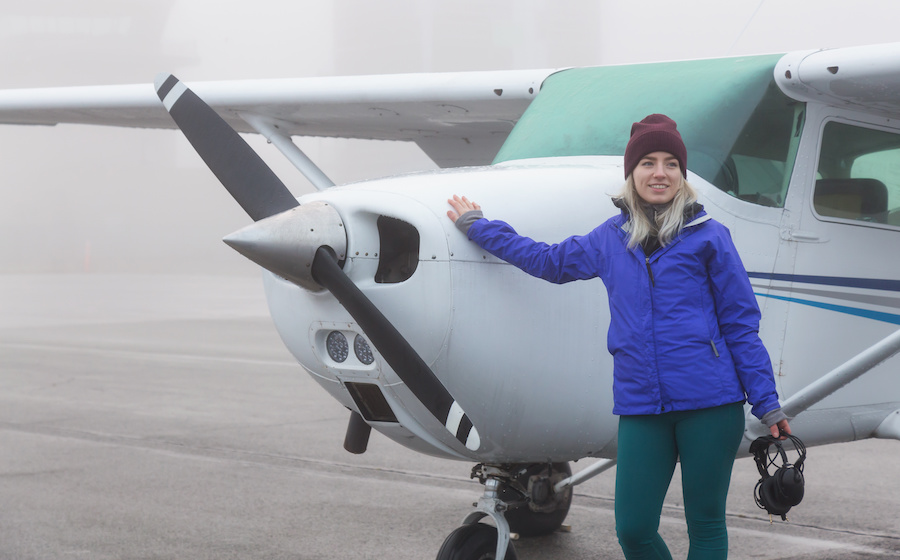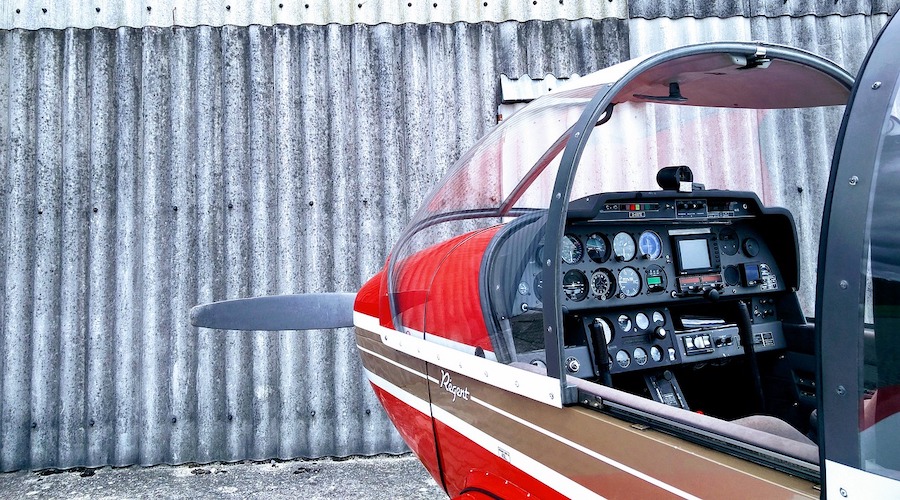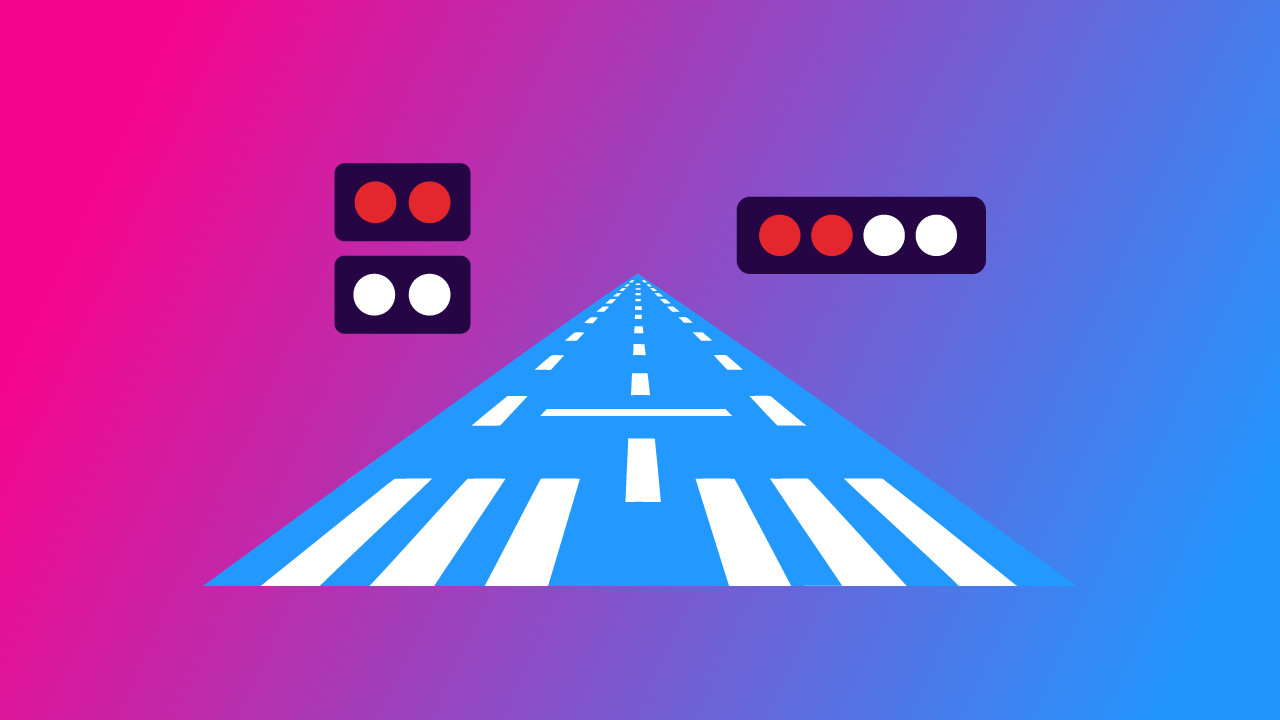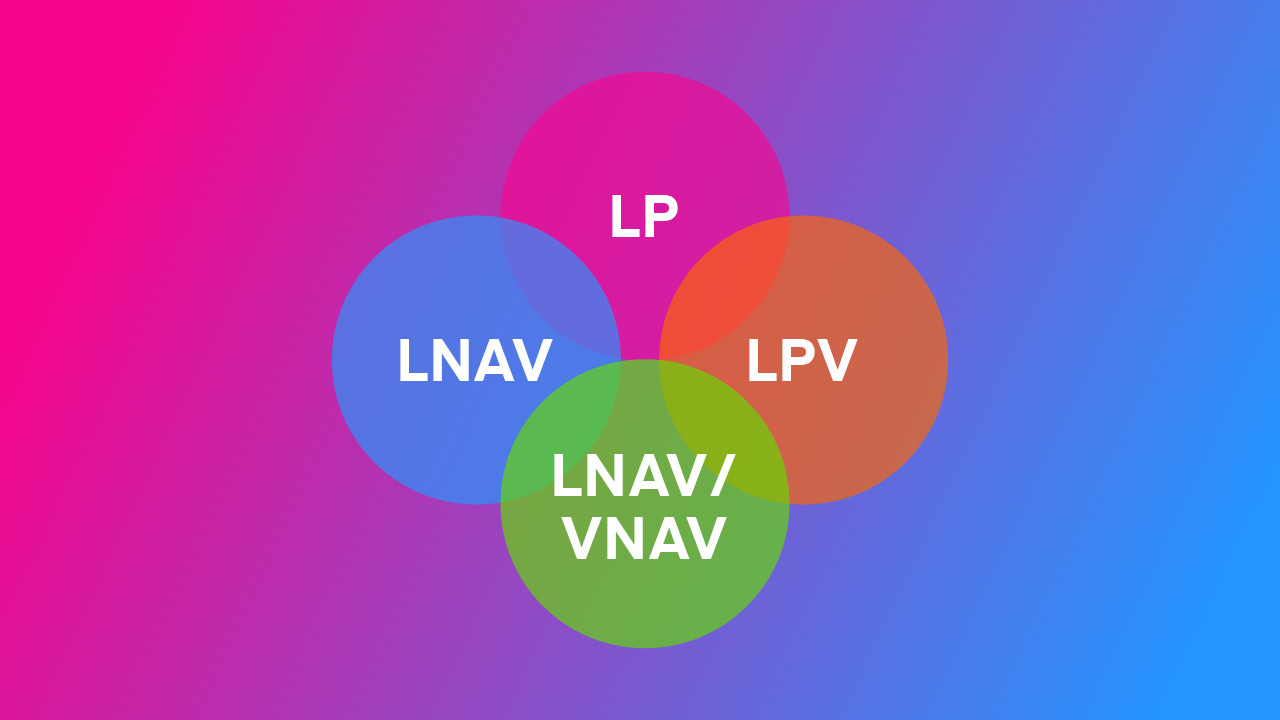-
What is a Private Pilot?
- Getting Your Private Pilot License
-
Private Pilot License Requirements
-
Private Pilot License Training
-
Ground School
-
Flight School
-
Private Pilot License Tests
- Aeronautical Knowledge Test
- Practical Test (Checkride)
-
Private Pilot License Privileges & Limitations
-
Private Pilot License Cost
- Airplane News Update
-
Final Thoughts
The private pilot license, or PPL, reigned supreme among all types of pilot licenses for a long time.
Why?
As a private pilot, you can fly virtually any aircraft, operate in visual flight rules (VFR) conditions, and add additional ratings such as the multiengine or instrument ratings.
Also, you don’t need hundreds of flight hours to complete your training. In fact, it could take you only a few weeks to get the license.
So, what does it take to become a private pilot?
First, you must be eligible.
But let’s define the term before going further.
What is a Private Pilot?

A private pilot is an individual that holds a private pilot license (or certificate).
A private pilot license is an FAA airman certificate issued to an applicant after passing the applicable knowledge and practical tests. It allows the holder to fly for private purposes, which with very few exceptions, precludes receiving compensation.
A private pilot may exercise the privileges consistent with the license.
Now that’s out of the way, let’s start with the requirements.
The steps first, though.
Getting Your Private Pilot License
Here’s how you become a private pilot:
- Ensure you fulfill the eligibility requirements
- Obtain your medical certificate (third-class, at a minimum)
- Join a pilot training program or find a flight instructor
- Complete your ground school or home-study course
- Pass your private pilot written test
- Get through your flight training and earn the required endorsements
- Pass your private pilot checkride
Let’s tackle the first step.
Private Pilot License Requirements
The FAA requires applicants for airmen certificates to be able to read, speak, write, and understand the English language.
You also need to be at least 17 years old (or 16 to fly gliders or balloons) to get a private pilot license.
Moreover, you must meet the following requirements:
- Hold either a student, sport, or recreational pilot certificate.
- Have at least a third-class medical certificate.
- Receive proper ground instruction, flight training, and logbook endorsements.
- Pass aeronautical knowledge and practical tests.
The easiest route to becoming a private pilot starts with getting a student pilot certificate, which involves little besides completing an online application. Alternatively, having a sport or recreational pilot license makes training easier, and likely faster, compared to a first-time pilot.
Getting your medical certificate requires yet another online application on MedXPress. After scheduling an appointment, an Aviation Medical Examiner (AME) issues the medical certificate after you pass a physical. The medical certificates include three classes: First, second, and third. Private pilots must meet the required standards for a third-class medical, at a minimum.
What’s next?
It’s time to hit the ground running.
Private Pilot License Training
Becoming a private pilot entails undergoing ground and flight school. You can do both simultaneously or opt to complete your ground school before starting your flight training.
Ground School
The PPL ground training introduces you to key aviation concepts. It helps you build your aeronautical knowledge in areas such as aerodynamics, Federal Aviation Regulations (FARs), and radio communication procedures.
You may choose between a home-study course or instructor lessons to complete your ground school.
But you should know that pilot schools come in two flavors, each following a different part of the FARs.
Part 61 schools have no minimum “ground” hours, while Part 141 schools must provide at least 35 hours of ground school.
In either case, enrolling in an online course is a good idea.
While many options exist, the virtual private pilot ground school on Pilotinstitute.com offers a course that helped over 2,000 students ace their knowledge exams. At a much lower price point than that of a formal ground course, mind you.
Flight School
As a private pilot in training, you learn how to fly aircraft, which involves more than handling the control wheel. Your flight training encompasses preflight preparation, navigation, and emergency procedures among several other areas of aircraft operations.
You learn the ropes from a flight instructor through flight lessons, each consisting of three segments:
- Preflight briefing: Discussing what you’re going to do in the aircraft.
- Flight training session: Doing what you discussed in the briefing.
- Postflight briefing: Evaluating your performance.
How many hours does it take to become a private pilot?
Although insignificant, the Part 61 vs Part 141 difference comes into play here. Part 61 schools’ minimum is 40 hours, while Part 141 schools have it at 35. Both figures must include 20 hours of flight training with an instructor as well as other minimum hours of solo, cross-country, instrument and night flight time.
Gaining the required flight proficiency takes most pilots 60 to 75 hours, though. Among other factors, your aptitude, flight frequency, pilot school, and flight instructor influence the number of flight hours.
Typically, it takes 3 months to complete a private pilot course. However, accelerated courses last only a handful of weeks.
Once your training is complete, and your instructor deems you ready, you must pass tests to get your license.
Private Pilot License Tests
Earning your private pilot license requires passing both knowledge and flight tests.
Aeronautical Knowledge Test
Interestingly, you may sit for the private pilot knowledge test at 15 years old. However, you must present an authorization to take the test.
What’s an authorization?
It’s proof that you’re ready for the test, which could be a certificate of graduation, a written statement, or a logbook endorsement.
Here’s what you need to know about the knowledge test:
- It consists of 60 multiple-choice questions.
- Each question has 3 possible answers.
- It’s 2 and half hours.
- The passing score is 70%.
- Retesting is possible after getting an instructor endorsement.
- It’s valid for two years.
Many pilots prefer to pass the knowledge test before they begin flight training. That’s often a good call since it allows you to fully focus on the flying.
Practical Test (Checkride)
Passing your private pilot practical test, commonly known as checkride, is the final step on your path to becoming a private pilot.
The checkride comes after completing your pilot training, passing your knowledge test, and getting an instructor endorsement.
What’s the deal with the instructor endorsement?
It attests to meeting the required practical test standards. Your instructor issues the endorsement, but only after you demonstrate flight proficiency in a 3-hour preparatory flight within two months of the test.
What’s the practical test like?
- It’s conducted by an FAA inspector or Designated Pilot Examiner (DPE).
- It consists of an oral and a flight, each lasting an average of 1.5 hours.
- Your examiner issues a temporary pilot certificate upon passing.
- You receive a permanent certificate from the FAA after reviewing your qualifications.
Congratulations, you got your PPL, but what does it allow you to do exactly?
Private Pilot License Privileges & Limitations
The FARs state private pilot privileges and limitations in detail, but here’s a roundup, you may:
- Pilot any aircraft you’re qualified for, at night, and in VFR.
- Fly IFR after getting an instrument rating (IR).
- Carry passengers and property, but not for compensation or hire.
- Share operating expenses with passengers on a pro rata basis.
- Participate in charitable flights and search and rescue operations.
- Demonstrate, as a salesperson, aircraft to prospective buyers.
The main restriction of the private pilot license is that you can’t fly for commercial purposes. Simply put, it’s tough to make money with a PPL.
Speaking of money, becoming a pilot doesn’t come for free.
Private Pilot License Cost
The cost of becoming a private pilot varies, but the average is around 10,000 dollars.
It goes up or down by a few grand depending on several factors, chief among which is the airplane rental rate. Case in point, you can rent an old Cessna for less than a hundred bucks, while a new Diamond DA40 Star runs at closer to $200 an hour.
Apart from training costs, you also have to pay certain fees:
- $75 to $200 for the medical certificate
- $140 to $165 for the knowledge test
What about the checkride?
It costs $350 to $550 with a DPE, while it’s free of charge with an FAA inspector. The FAA charges nothing for issuing the license.
You’d be wise to budget $500 to $1000 for aviation books, study supplies, and pilot headsets among other potential expenses.
Final Thoughts
Private pilots make up a huge segment of active airmen in the United States.
Don’t be fooled by its popularity, though, getting your private pilot license isn’t easy. It involves braving strenuous training, passing rigorous tests, and paying a large sum of money.
Certainly, it takes a significant investment of time, effort, and cash.
You’d be smart to contemplate before starting your private pilot course. You need to be highly motivated to complete it.
Wondering how to get the license in the shortest time?
It starts with doing thorough research, finding a good pilot school, and picking a good flight instructor. Thereafter, you need to study, practice, and fly as often as possible.

 @pilotinstituteairplanes
@pilotinstituteairplanes



